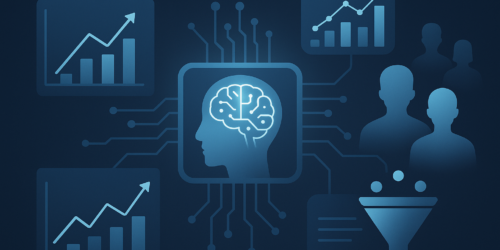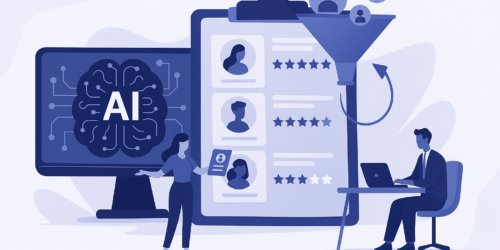What's in this article?
Sales forecasting has always been a pivotal component for business success, influencing decision-making processes at all organizational levels. Traditional methods, however, often rely on historical data and human intuition, which can leave room for significant error. With the advent of machine learning (ML), companies now have the opportunity to shift their forecasting from retrospective analysis to predictive insights, drastically transforming how forecasts are generated and leveraged.
Understanding the Basics of Machine Learning in Sales Forecasting
Machine learning stands at the forefront of modern analytics, using computational algorithms to analyze data trends and patterns without explicit programming. In the realm of sales forecasting, ML tools integrate various data points—from customer interactions to market trends—to dynamically predict future sales outcomes. This enables businesses to move beyond static models and embrace a more adaptive, data-driven approach to forecasting.
Benefits of ML in Enhancing Sales Forecasting
Accuracy Improvements: Machine learning significantly heightens the accuracy of sales forecasts. By analyzing vast and complex datasets, ML models detect patterns and correlations often omitted by traditional methods. This leads to forecasts that better reflect real-time market dynamics. Companies that have adopted ML in their sales processes report substantial increases in forecast accuracy, thereby enhancing sales strategy formulation and execution.
Trend Identification: One of ML’s most compelling advantages is its ability to identify emerging trends before they become apparent to the human eye. ML algorithms frequently analyze evolving buyer behaviors, seasonal variations, and competitor activities, offering insights to help businesses anticipate and react to changes in consumer demand more effectively.
Proactive Sales Strategy: With more reliable data at their disposal, businesses can shift from reactive to proactive sales strategies. ML-driven forecasts allow for the anticipation of sales trends and customer behaviors, enabling more agile and strategic decision-making processes. This leads directly to improved customer service and increased competitive advantage.
Challenges of Integrating Machine Learning in Sales Forecasting
While the benefits are clear, integrating ML into sales forecasting comes with challenges. Data quality and integration with existing systems remain primary concerns. Inconsistent data or incompatible system architectures can compromise forecast accuracy. Overcoming these challenges often requires a strategic approach, including investing in quality data management practices and seamless integration solutions.
Real-World Applications and Success Stories
Numerous companies across industries have successfully integrated ML into their sales processes with transformative results. For instance, a financial services firm enhanced its forecasting process by adopting ProPair’s machine learning solutions, achieving a 20% improvement in forecast accuracy. Another case involves a retail company using ML models to align inventory management with predictive sales outcomes, resulting in reduced overstock and improved sales performance .
Best Practices for Implementing ML in Sales
Implementing ML effectively requires carefully considered strategies. Start by selecting the right ML technologies that align with your sales objectives. Integrate these with your CRM systems to ensure data flows seamlessly from sales activities into forecasting models. Continuous monitoring and adjustments to the ML models ensure that predictions align with changing market conditions.
Future of Sales Forecasting with ML
The future of sales forecasting with machine learning promises advancements that further refine accuracy and strategic insight. As algorithms become more sophisticated and data accessibility improves, businesses can expect even greater predictive capabilities. Emerging AI technologies and deep learning will likely transform ML-driven forecasts, making them indispensable tools for both small businesses and large enterprises.
Beyond the immediate enhancements in accuracy and trend prediction, companies need to prepare for new frameworks in sales management where data-driven strategies will dominate. This shift not only increases efficiency but also brings about more customer-centric approaches, fundamentally reshaping the landscape of sales operations.
Explore the Possibilities with ProPair
Embracing machine learning in sales forecasting could be your next strategic move to amplify success and streamline efficiency. Discover how ProPair’s cutting-edge ML solutions can revolutionize your sales forecasting capabilities, ensuring your sales team is not just guided by intuition but empowered by data-driven insights. Get started with ProPair today by booking a demo.
Related Reading
FAQ
What are the key benefits of machine learning in sales forecasting?
Machine learning enhances forecast accuracy, identifies emerging trends, and enables proactive sales strategies.
How does machine learning improve forecast accuracy?
By analyzing large datasets to detect patterns and trends that traditional methods might miss, leading to more reliable predictions.
What challenges are associated with integrating machine learning in sales forecasting?
Primary challenges include ensuring data quality and system compatibility, which can affect the accuracy of forecasts.
Can machine learning be integrated with existing CRM systems?
Yes, with proper strategy and alignment, machine learning models can be integrated into CRM systems to enhance sales processes.
What does the future hold for machine learning in sales forecasting?
Continued advancements in AI technologies promise improvements in prediction accuracy and strategic sales insights.



